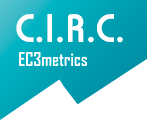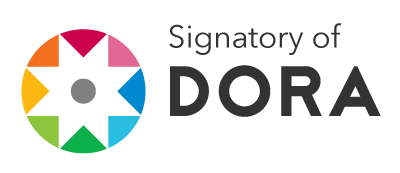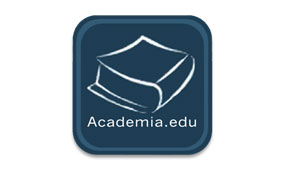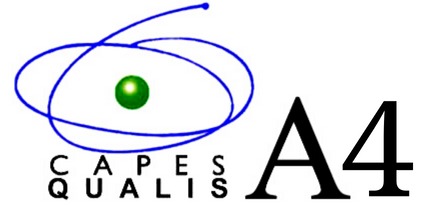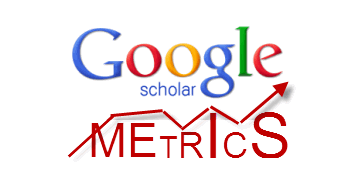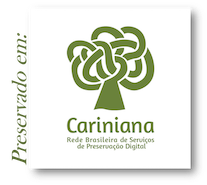O periódico ÁGORA figura a partir de 2021 no catálogo 2.0 do LATINDEX
Alvo
O objetivo dessa nova lista de características é reforçar o papel pedagógico e didático que o Latindex vem desempenhando junto aos editores desde o surgimento do Catálogo em 2002. Foi preciso atualizar a metodologia para adaptá-la aos novos processos de comunicação científica que estão sendo desenvolvidos .Eles estão dando para o mundo por meio de revistas disponíveis online.
O Catálogo 2.0 aplica-se apenas a revistas online. Substitui o Catálogo 1.0, aplicado a revistas impressas e online, cujos resultados foram válidos de 2002 a 2017. Com esta nova metodologia - e com o rearranjo de características, especialmente aquelas que foram integradas no grupo de “obrigatórias” - Pretende-se que os editores sejam informados sobre as regras que prevalecerão na conformação do Catálogo 2.0 em cada um dos centros nacionais.
Na concepção desta nova proposta, foi considerado o desafio adicional que o Latindex representa de aplicar o mesmo modelo de classificação a periódicos com diferentes objetivos (pesquisa, técnicas e divulgação), de diferentes disciplinas e em países que também possuem diferentes graus de desenvolvimento. .econômicas, científicas e sociais.
Cada uma das características que compõem o Catálogo Latindex 2.0 é verificada única e exclusivamente com a informação que pode ser visualizada e consultada no site institucional ou oficial de cada revista; Desta forma, incentiva-se também a criação e manutenção de websites sob a responsabilidade da instituição editora.
Considera-se site institucional aquele de responsabilidade direta da entidade editora da revista. Considera-se site oficial aquele que, por encomenda da instituição editora, é gerido por outras organizações ou empresas para a gestão, edição e pleno acesso aos conteúdos da revista. Entende-se que nos sites oficiais os conteúdos continuam a ser da responsabilidade da entidade editora. Os sites oficiais serão considerados para classificação apenas quando a revista não possuir, no momento da classificação, um site institucional ou não estiver atualizado. Tanto os sites institucionais quanto os oficiais podem ser dedicados a uma única revista ou fazer parte de um portal composto por várias revistas.
Com esta política, pretende-se promover a profissionalização das equipas editoriais institucionais, para que as revistas não dependam de iniciativas externas para o acesso ao seu conteúdo e a sua divulgação. Da mesma forma, promove-se a construção de revistas digitais capazes de gerar serviços e atender seus usuários com base em políticas próprias. Esta situação dá liberdade às instituições responsáveis para integrarem serviços de valor acrescentado de seu próprio interesse, facilidades de interoperabilidade, melhorar o seu posicionamento web, publicando desde o seu próprio domínio web, bem como formar recursos humanos locais para essas tarefas.
Esta proposta visa dar ao Catálogo uma nova categoria como referência confiável para periódicos acadêmicos de alta qualidade, ao mesmo tempo em que funciona como um compêndio de boas práticas editoriais para periódicos disponíveis online.
Plano de trabalho
A partir de outubro de 2018, a nova metodologia começou a ser aplicada. Cada centro nacional iniciou o processo de qualificação de periódicos online, sempre com base na metodologia atual. Os centros de coleta nacionais podem avaliar periódicos a partir de listas preparadas com antecedência ou, a pedido de editores interessados em ter seus periódicos avaliados.
O lançamento do Catálogo 2.0 significa “começar do zero”, por isso o número de revistas exibidas no site aumentará à medida que o trabalho avança em cada país participante. Porém, os resultados obtidos com o Catálogo 1.0 (2002-2017) continuarão a ser consultados no cadastro de cada periódico, apenas como referência histórica.
Requisitos de aplicação
1. Para serem avaliados, os periódicos devem ter dois anos de idade em sua versão online e estar atualizados no momento da classificação.
2. As revistas devem ter um site institucional ou oficial dedicado, onde será verificada a conformidade de cada uma das características.
3. O site da revista deve permitir o acesso gratuito a todo o conteúdo. Isso significa que a nova lista de critérios não pode ser aplicada a periódicos com acesso restrito, a menos que seja aberto um acesso para a classificação do Latindex.
4. As revistas digitalizadas não serão avaliadas em um único arquivo PDF no qual todos os documentos ou artigos publicados são integrados (comumente chamado de “camada a camada”). Cada artigo publicado deve ser consultado de forma independente.
5. Os periódicos publicados por instituições privadas, de acordo com a classificação do Latindex, devem ser indexados no Diretório de Abertos








